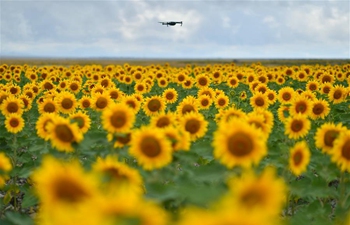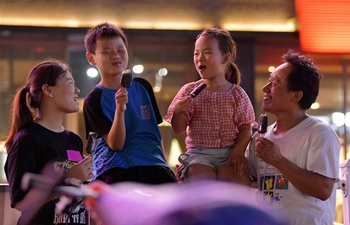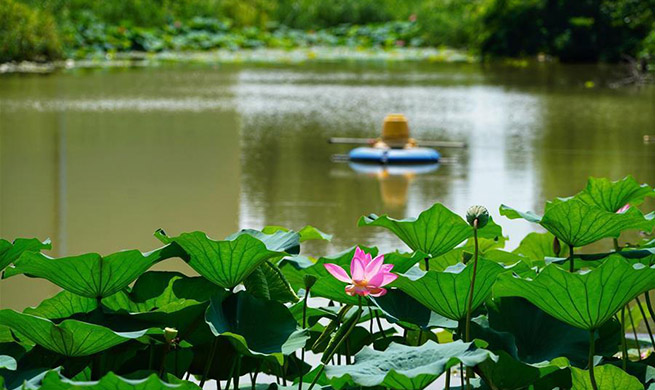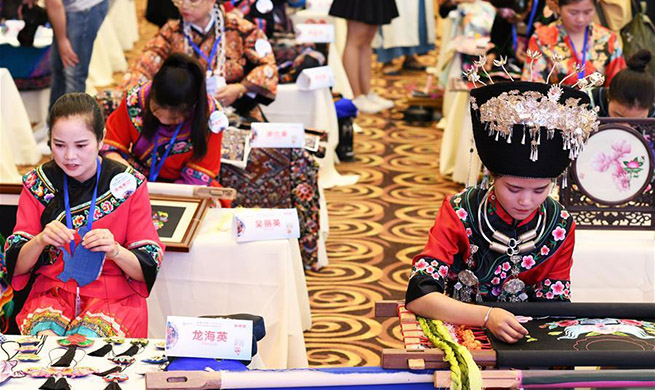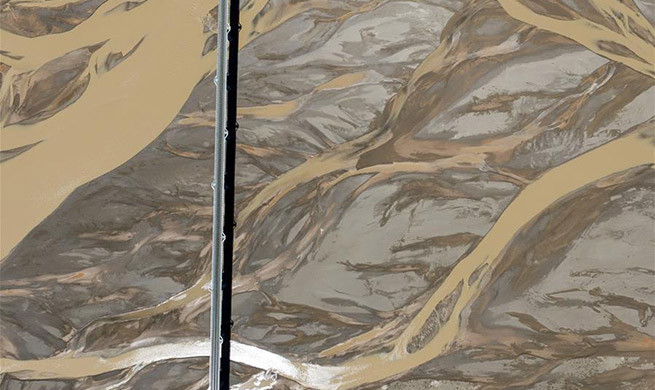LOS ANGELES, Aug. 14 (Xinhua) -- The historic Huntington Library, Art Collections, and Botanical Gardens in Los Angeles County will present a major exhibition of Chinese calligraphy as the inaugural installation in its Chinese Garden's new art gallery next year, the collections-based research and educational institution announced Tuesday.
"A Garden of Words: The Calligraphy of Liu Fang Yuan (the Garden of Flowing Fragrance)" will kick off on May 30, 2020 in the Studio for Lodging the Mind. The new Studio for Lodging the Mind is part of the Chinese Garden expansion which is on track for completion in May 2020. The opening of the new sections of the garden will be one of the keystone events of The Huntington's yearlong Centennial Celebration, which gets underway this September, said the intellectual and cultural powerhouse in a press release.
More than 50 Chinese artisans from the Suzhou Garden Development Company are spending six months at The Huntington doing specialized carpentry, masonry, and tile work for the traditional structures in the final phase of the expansion project.
The works of 21 contemporary ink artists will be featured in the exhibition, which will be presented in two 16-week rotations of 20 works each. The first installation continues through Sept. 7, 2020, and the second runs from Sept. 12, 2020, through Jan. 4, 2021.
The new Studio for Lodging the Mind, located at the north end of Liu Fang Yuan, is a 1,720-square-feet, light- and climate-controlled gallery space suitable for the display of works of art on paper or silk-including the original calligraphic scrolls on paper that serve as the models for the garden's inscriptions.
"Chinese calligraphy is an art of seeming contradictions," said Phillip E. Bloom, the June and Simon K.C. Li Curator of the Chinese Garden and Director of the Center for East Asian Garden Studies.
"Though crafted with simple materials - brush, ink and paper - its visual forms are myriad. Though written according to rigid rules, it also encourages sophisticated forms of personal expression. And while it is ubiquitous in the Chinese-reading world, calligraphy nevertheless can remain difficult even for the erudite to appreciate," he explained, hoping to help make it more accessible and to make a significant contribution to public engagement with the art form through the exhibition.




